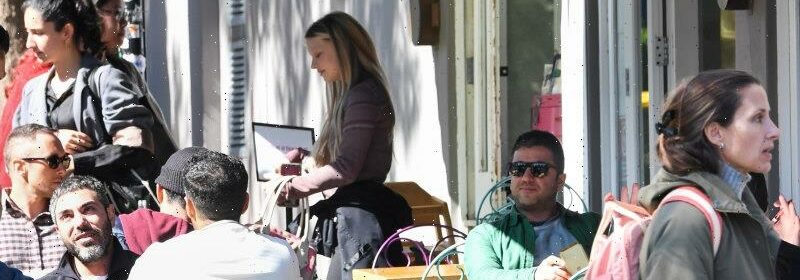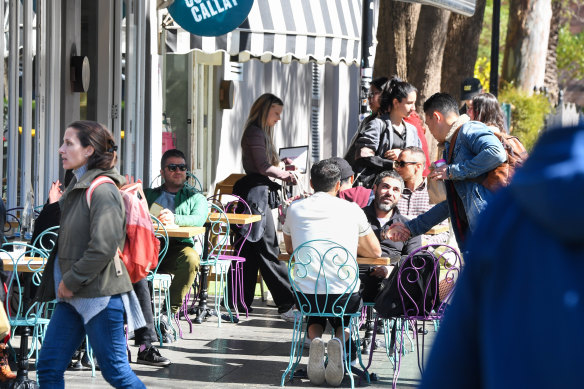Cashed-up consumers drive economy through June quarter

The Australian economy expanded by another 0.9 per cent in the June quarter, as strong consumer spending in hotels, cafes and across recreational pursuits continued to support the country.
The Australian Bureau of Statistics on Wednesday reported the annual gross domestic product (GDP) lifted to 3.6 per cent through the past 12 months, slightly above market expectations.
A strong lift in spending in hotels and cafes helped the economy expand another 0.9 per cent in the June quarter.Credit:Peter Rae
The bureau said household consumption contributed 1.1 percentage points to the overall result, driven by discretionary funding.
Concern has been growing that the Reserve Bank’s aggressive increase in interest rates will hit households that are already carrying record levels of debt. The June quarter national accounts cover the RBA’s first two rate rises.
During the quarter, people’s spending in hotels, cafes and restaurants increased by 8.8 per cent, by 3.6 per cent on recreation and culture while there was a 3.7 per cent bump in spending on clothing and footwear.
Sean Crick, head of national accounts at the ABS said increases in household spending and exports drove economic growth over the June quarter.
Household spending was driving by a boom in travel-related spending, which grew by 37.3 per cent.
“Households increased spending on domestic and international travel as COVID restrictions further eased and international borders remained open,” Crick said.
“While spending on transport grew strongly, households were still only spending two-thirds of what they did pre-pandemic.”
The economy has now grown by 13.7 per cent since the June quarter of 2020 when it suffered its biggest contraction since the Great Depression.
Exports grew by 5.5 per cent, the strongest rate in more than two decades, driven by iron ore and fuels as well as rural goods.
“Exports recorded the strongest quarterly rise since the Sydney Olympics boosted travel exports in September quarter 2000,” Crick said.
While household spending was up, expenditure by governments reduced the overall result by 0.2 percentage points.
Final spending by state and local government dropped by 1.2 per cent while there was a 3.8 per cent drop in federal government spending on defence. Non-defence spending at the federal level increased by 0.5 per cent.
At the industry level, there was strong growth in the transport and warehousing sector (up by 7.5 per cent in the quarter), the hospitality area (up by 10.7 per cent) and the arts and recreation sector (up by 3.5 per cent).
At a state level, household consumption grew at the largest rate over the three months to June in NSW, at 2.5 per cent, followed by Victoria at 2.3 per cent and Queensland at 2.2 per cent.
That household consumption drove state final demand, with the domestic NSW growing by 1.9 per cent over the quarter.
Household consumption there was driven by increased spending on dining out and hotels, up 10.9 per cent, and transport, up 35.6 per cent, while a 10.4 per cent uptick in power and fuel costs also contributed.
In Victoria, where the state’s domestic economy grew by one percent, household consumption was led by transport services, up 36.7 per cent, higher spending on hotels, cafes and restaurants, up 7.7 per cent, and a 5.1 per cent increase in health spending.
Not all states experienced domestic economic growth – Western Australia’s economy only grew by 0.1 per cent, while the Northern Territory went backwards by half a per cent.
Cut through the noise of federal politics with news, views and expert analysis from Jacqueline Maley. Subscribers can sign up to our weekly Inside Politics newsletter here.
Most Viewed in Politics
From our partners
Source: Read Full Article
